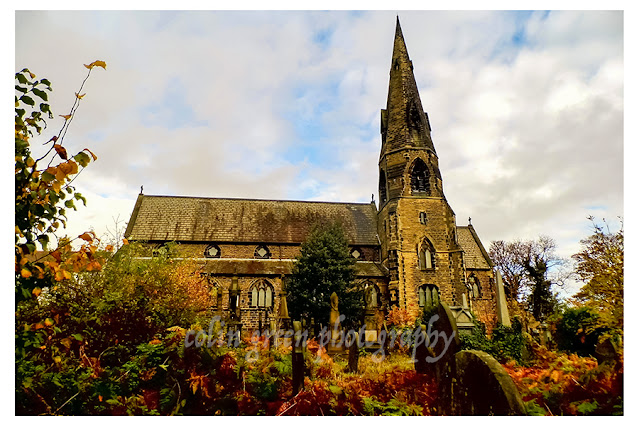Nestled amidst the picturesque, rolling hills of the Calder Valley, the Church of St. James the Great stands as a silent witness to nearly two centuries of history. Affectionately known to locals as Hebden Bridge Parish Church or Mytholm Church, this Grade II listed Anglican place of worship is about to celebrate a remarkable milestone: its 190th anniversary this October.
These images, captured on a crisp November day in 2013, offer a glimpse into the enduring charm of this historic building. The late autumn light, a mix of brilliant sunshine and soft cloud cover, beautifully illuminates the church’s weathered stone facade and the vibrant foliage of the surrounding trees.
A Product of a Pious Era
The story of St. James the Great is inextricably linked to a significant moment in British history—the Million Pound Act. This government initiative, designed to provide places of worship in rapidly growing industrial areas, led to the construction of numerous churches across the country. St. James the Great was a beneficiary of this scheme, built at a cost of £2,700 and consecrated on October 5, 1833. It’s a testament to the foresight of its creators and the burgeoning faith of the community it was built to serve.
Initially a chapelry within the Parish of Heptonstall, St. James the Great gained its own identity when the Parish of Hebden Bridge was established in 1844. This marked a new chapter for the church, solidifying its role as the spiritual heart of the community.
Architectural Evolution
Like many historic buildings, St. James the Great has evolved over time. While the original structure was a solid example of early 19th-century church architecture, it was significantly enlarged in 1876 with the addition of a chancel. The pictures show this blend of architectural styles, a subtle harmony between the original design and later modifications. The last major alterations were made to the tower in the early 1980s, ensuring the church's structural integrity for future generations.
The stunning stained glass windows, visible in some of the images, are all from the 1870s. Their rich colours and intricate designs tell their own stories, filtering light into the hallowed interior and adding a layer of visual splendour.
A Place of Remembrance
The churchyard itself is a poignant and peaceful space. It is home to a stone cross war memorial, a solemn tribute to the local men who made the ultimate sacrifice during the First World War. The memorial stands as a constant reminder of the community's history and resilience. An additional memorial is located inside the church, ensuring that their names and memory are forever honoured.
As you wander through the rows of gravestones, some worn with age and others still bearing clear inscriptions, you can feel the weight of history all around you. Each stone marks a life lived, a story told, and a connection to this place. The churchyard, with its moss-covered headstones and towering trees, is a place of quiet reflection and deep reverence.
An Enduring Presence
These photographs, taken a decade ago with a Samsung Galaxy Tablet, capture not just a building, but the soul of a place. They show a church that is both imposing and welcoming, a landmark that has been an integral part of Hebden Bridge's landscape for almost 190 years.
As St. James the Great prepares to celebrate its anniversary, we are reminded of its enduring significance. It is more than just a place of worship; it is a symbol of community, a repository of memory, and a beautiful piece of architectural heritage. Its stones hold the stories of generations, and as it enters its 190th year, it continues to be a steadfast beacon for the people of Hebden Bridge.
Clicking any of the images below should open a link in another window to my Colin Green Photography store on Zazzle.
Built using Yorkshire Stone and rising 14ft high, this memorial is dedicated to the men killed from the local area in World War 1.
Please take a moment to share this post, follow me on social media, and explore my work on Clickasnap and Photo4Me using the links below. Your support means a lot!
All the pictures remain the copyright of Colin Green.






































































